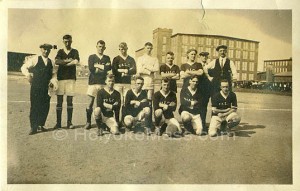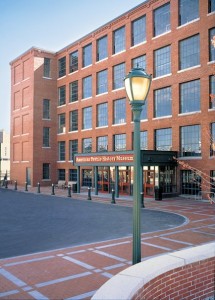My interest in the story of the Falcos began because I was curious how they became one of the founding teams of the American Soccer League (ASL) in 1921 and why they dropped out after only one season. I knew beforehand that these might be difficult questions to answer but I had no idea how challenging and interesting and ultimately how rewarding the quest would become.
I started the search for the Falcos with Colin Jose’s book on the ASL titled American Soccer League, 1921-1931: The Golden Years of American Soccer. Early on Jose informs the reader that the institutional records of the league have never been found, a fact that makes the research that follows all the more remarkable. The book is less a comprehensive history and more a detailed numerical record of the ASL, with lists of results, records and brief narrative summaries of each season along with selected player biographies. Through meticulous and undoubtedly tedious research Jose has recovered much of the statistical history of the league. Despite this notable achievement, the information on particular teams or players can be inconsistent or missing, especially for lesser known clubs like the Falcos. Most players are listed by last name, as was the newspaper convention at the time, sometimes with a first initial but most often not. In the section on the Falcos for instance, we find that “J. Downie” was the club’s leading goal scorer during the season, and that “Moodie” played in eighteen games. The entry contains no other information about the club beyond the lists of games and names. In one of the narrative sections there is a brief reference to Farr Alpaca the textile firm that sponsored the club, but Jose provides little additional context.

The company had long been out of business by the time I began my research but for many decades it had been an important part of Holyoke’s industrial landscape. I hoped that perhaps a corporate archive might exist and that it would contain information on the soccer club. From Frances Cornwall Hutner’s 1951 book The Farr Alpaca Company. A Case Study in Business History I learned that when she conducted her research the company’s archive was housed at Smith College. Hutner later characterized the records as being in a great state of disarray when she worked with them. The records came to Smith College sometime after the firm ceased to exist in 1940. Presumably, the extensive collection, running to at least 280 linear feet, arrived at the college because of historian Constance Green. An alumna of Smith, she later taught in the college’s history department, married a Farr Alpaca executive and wrote an important book about the city of Holyoke.

In the late 1980s, Smith College donated the archive to the Springfield City Library. The library culled some records and sold more to at least two different document dealers. The American Textile History Museum (ATHM) in Lowell, Massachusetts purchased most of the archive in 1987 while the Springfield records were moved from the City Library to the Connecticut Valley Historical Museum. Eventually the materials that had remained in Springfield were donated to ATHM in 1996. The archives as they currently exist are incomplete in several ways. Although the company was in business from 1873-1940, the bulk of the records held by ATHM span the period 1874-1918. It is possible that some of the missing records were destroyed in a fire as several items in the collection are described as having fire damage. Despite the existence of a large amount of material the crucial items for my research, information related to the company’s soccer team are missing or perhaps never existed in the first place. Despite the fact that the company supported a large number of sporting teams, including cricket and baseball along with soccer, none of the existing company records lists a single item directly related to these activities.
As a result I turned to newspapers. The main local papers during the period were the Holyoke Daily Transcript and the Springfield Republican. The Transcript has not been digitized and so I pored through the microfilm in search of stories about the Falcos and the clubs that came before them. At times it was like looking for a needle in a haystack. It also turns out that the Falcos hometown paper provided less coverage of the local side than did the nearby Springfield Republican. The archives of the Republican have been digitized and this made searching much easier and far more efficient. The newspapers provided me with names, dates and other important information that allowed me to tell a more complete version of the Falcos story. I supplemented these sources with materials, including City Guides and maps, from the Holyoke Public Library History Room and Archives. It was at the Archives one day that another researcher happened to mention that a vintage soccer photo hung on the walls of a local hardware store and bike shop. Sure enough, the owner of the shop enjoyed collecting historical photographs of the city and had an image of the 1910 Chaloux cup match between Farr Alpaca Football Club and Clan MacLaren. In the end it took persistence and a bit of luck to uncover something of the story of the Falcos.
Originally posted August 2013.
Further Reading
Brian D. Bunk, “The Rise and Fall of Professional Soccer in Holyoke Massachusetts, USA” Sport in History 31, no. 3 (Sept. 2011): 283-306.
William F. Hartford, Working People of Holyoke. Class and Ethnicity in a Massachusetts Mill Town, 1850-1960 (New Brunswick, NJ: Rutgers University Press, 1990).
Constance Green, Holyoke Massachusetts. A Case Study of the Industrial Revolution in America (Archon Books, 1968; reprint 1939).
Spalding’s Official “Soccer” Foot Ball Guide. ed. Thomas W. Cahill (New York: American Sports Publishing Company, 1921)
Sound Clips in this episode from www.freesound.org:
Bagpipes_in_Pitlochery.wav by Darkgot__inchadney
file0006 Water Fall, Mill, Billerica.mp3 by smokeyvw
motorcycle and car.wav by jaava73
Train upon us.wav by markedit
Rain on Plastic Roof.WAV by gynation
Op_Cls_1.WAV by kjackson
jingle-bells.wav by justkiddink
Metal Band Jam 5 Thrash.wav by RutgerMuller
football score.wav by winsx87
The Internationale orchestral arrangement by Jerry Engelbach